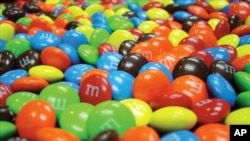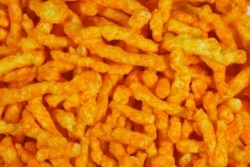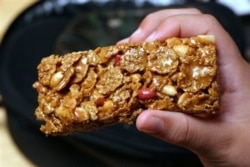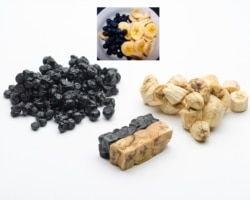From instant coffee to Cheetos, packaged cookies and energy bars, the U.S. military helped invent many of the snacks Americans love to eat.
The effort accelerated during World War II, when military scientists needed to develop compact yet nutritional ways to feed the troops.
“There was a tremendous need for the military to develop modern rations, and it ended up not only inventing a bunch of new food processing techniques but putting in place a food science research system that exists to this day,” says food writer Anastacia Marx de Salcedo, author of "Combat-Ready Kitchen: How the U.S. Military Shapes the Way You Eat". “Out of that came a lot of new techniques and food, and after the war, those were incorporated into snack and convenience foods.”
Those new techniques include high pressure processing, which makes uncooked food safe to eat. The process is routinely used in packaged foods like guacamole, salsa and hummus.
Cheetos, one of America’s favorite cheesy, crunchy snacks, are made possible by the dehydration process the military worked on to remove the water from cheese. That gave cheese both a longer shelf life and made it lighter to transport to troops overseas.
Freeze dehydration, a process developed to preserve battlefield blood products so that medics could treat soldiers in the field, also made its way into the food chain.
“After the war ended, there was a little freeze-dehydration industry, but they no longer had a purpose and so the military took a look at that and decided to take the capability to develop food products,” Marx de Salcedo says. “So, of course, you have the beverages, you have freeze-dried coffee, tea, soups.”
When NASA astronauts balked at the taste of freeze-dried foods — cubes that were the precursor to the modern energy bar — the military searched for a way to make rations more palatable.
Military scientists discovered that pet food companies were working on a way to make the water level low enough to prevent bacteria and fungi from being produced, making the food safe.
“Once they figured that out, they were able to keep foods moist and chewy at room temperature and with regular packaging,” Marx de Salcedo says. “And in fact, that tactic is not only used in energy bars, it's used in the bakery aisle. If you go into a grocery store, and you see moist and chewy cookies, those are all that same technique that comes out of the military research.”
The military also adopted a candy-coated chocolate snack found in Europe that service members could carry around in their pockets without the chocolate immediately melting. That’s how M&M candies were born. Today, some of the biggest military contractors continue to search for the perfect meltless chocolate that will be able to withstand extreme temperatures.
The next known frontier in military food science has arrived in the form of mini-food that is shrunk to one-third of the normal size, resulting in foods that are small but still dense.
“They use microwave vacuum dehydration to reduce the water content of foods and what essentially that does is it miniaturizes the food so you get these little tiny carrots, but you can have a fresh carrot,” Marx de Salcedo says. “It still has the same amount of calories even though it’s small.”
Whether American civilians will one day be packing miniature lunch boxes in order to lighten their load during their daily commute to work remains to be seen.



